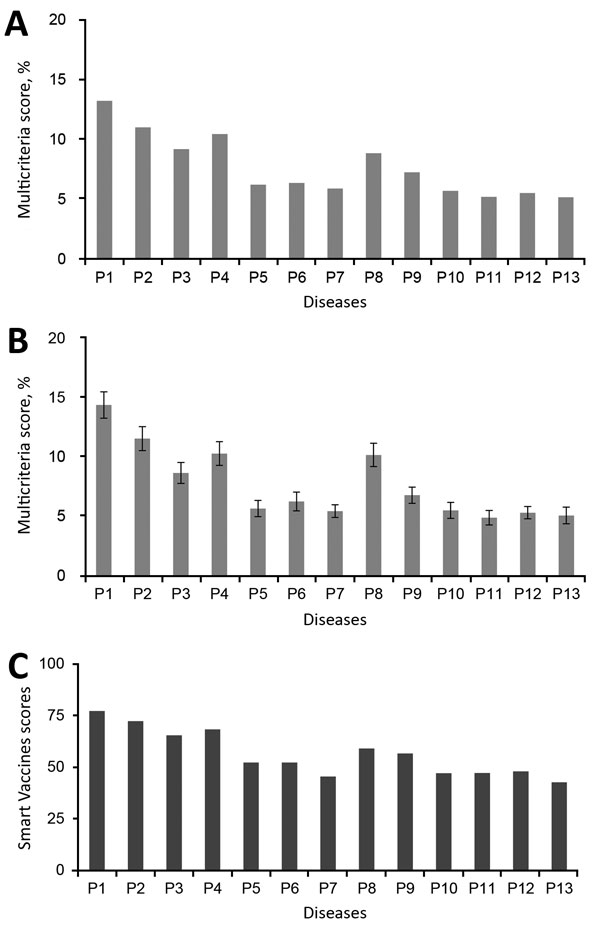Archive for the ‘MERS-CoV’ Category
MERS-CoV cases announced from Wadi al-Dawasir
Tuesday, February 12th, 201903/02/2019 19-1793
MERS in Riyadh city: 75-year-old male in Riyadh city, Riyadh region Contact with camels: No Case classification: Primary, community acquired Current status: Hospitalized
ﻣ ﺔﻣزﻼﺘ قﺮﺸﻟا ﻂﺳوﻷا ﺔﻴﺴﻔﻨﺘﻟا ﻦﻣ ﺔﻨﻳﺪﻣ اﻟﺮﻳﺎض: ﻣﻨﻄﻘﺔ اﻟﺮﻳﺎض ، ﻋﺎ ًﻣﺎ ﻦﻣ ﺔﻨﻳﺪﻣ اﻟﺮﻳﺎض 75 ﻞﺟر ﻳ ﻎﻠﺒ ﺔﻄﻟﺎﺨﻣ ﻞﺑﻺﻟ ﻻ: ﻣﻜﺘﺴﺒﺔ ﻓﻲ اﻟﻤﺠﺘﻤﻊ ، ﻒﻴﻨﺼﺗ ﺔﻟﺎﺤﻟا أ:ﺔﻴﻟو ﺔﻟﺎﺣ اﻟﻤﺮﻳﺾ :مﻮﻨﻣ ﻲﻓ اﻟﻤﺴﺘﺸﻔﻰ
03/02/2019 19-1794
MERS in Wadi Aldwasir city: 55-year-old male in Wadi Aldwasir city, Riyadh region Contact with camels: Yes Case classification: Secondary, healthcare-acquired Current status: Hospitalized
ﻣ ﺔﻣزﻼﺘ قﺮﺸﻟا ﻂﺳوﻷا ﺔﻴﺴﻔﻨﺘﻟا ﻦﻣ ﺔﻨﻳﺪﻣ يداو ، ﻋﺎ ًﻣﺎ ﻦﻣ ﺔﻨﻳﺪﻣ يداو اﻟﺪواﺳﺮ 55 اﻟﺪواﺳﺮ: ﻞﺟر ﻳ ﻎﻠﺒ ﺔﻘﻄﻨﻣ اﻟﺮﻳﺎض ﺔﻄﻟﺎﺨﻣ ﻞﺑﻺﻟ :ﻢﻌﻧ ﻣﻜﺘﺴﺒﺔ ﻓﻲ ﻣﻨﺸﺄة ﺔﻴﺤﺻ ، ﻒﻴﻨﺼﺗ ﺔﻟﺎﺤﻟا :ﺔﻳﻮﻧﺎﺛ ﺔﻟﺎﺣ اﻟﻤﺮﻳﺾ :مﻮﻨﻣ ﻲﻓ اﻟﻤﺴﺘﺸﻔﻰ
03/02/2019 19-1795
MERS in Wadi Aldwasir city: 40-year-old male in Wadi Aldwasir city, Riyadh region Contact with camels: yes Case classification: Secondary, household contact Current status: Hospitalized
Oman reports one more MERS case, coming just days after it reported four others
Tuesday, February 5th, 201903/02/2019 19-1793
MERS in Riyadh city: 75-year-old male in Riyadh city, Riyadh region Contact with camels: No Case classification: Primary, community acquired Current status: Hospitalized
03/02/2019 19-1794
MERS in Wadi Aldwasir city: 55-year-old male in Wadi Aldwasir city, Riyadh region Contact with camels: Yes Case classification: Secondary, healthcare-acquired Current status: Hospitalized
03/02/2019 19-1795
MERS in Wadi Aldwasir city: 40-year-old male in Wadi Aldwasir city, Riyadh region Contact with camels: yes Case classification: Secondary, household Current status: Hospitalize
The Saudi Arabian Ministry of Health (MOH) recorded two new cases of MERS in recent days
Wednesday, January 23rd, 201922/01/2019 19-1783
MERS in Riyadh city: 66-year-old male in Riyadh city, Riyadh region
Contact with camels: No
Case classification: Primary, community acquired
Current status: Hospitalized
“…..The new cases likely lifts on the global total since 2012 to 2,288 cases, at least 806 of them fatal.….”
Saudi Arabia: 8 MERS-CoV cases, two of them fatal, between Oct 31 and Nov 30.
Monday, December 31st, 2018Middle East respiratory syndrome coronavirus (MERS-CoV) – Saudi Arabia
From 31 October through 30 November 2018, the International Health Regulations (IHR 2005) National Focal Point of Saudi Arabia reported eight additional cases of Middle East respiratory syndrome coronavirus (MERS-CoV) infection, including two deaths. Details of these cases can be found in a separate document (see link below).
From 2012 through 30 November 2018, the total number of laboratory-confirmed MERS-CoV cases reported globally to WHO under IHR (2005) is 2274 with 806 associated deaths. The total number of deaths includes the deaths that WHO is aware of to date through follow-up with affected member states.
WHO risk assessment
Infection with MERS-CoV can cause severe disease resulting in high mortality. Humans are infected with MERS-CoV from direct or indirect contact with dromedary camels. MERS-CoV has demonstrated the ability to transmit between humans. So far, the observed non-sustained human-to-human transmission has occurred mainly in health care settings.
The notification of additional cases does not change the overall risk assessment. WHO expects that additional cases of MERS-CoV infection will be reported from the Middle East, and that cases will continue to be exported to other countries by individuals who might acquire the infection after exposure to animals, animal products (for example, following contact with camels), or humans (for example, in a health care setting). WHO continues to monitor the epidemiological situation and conducts risk assessment based on the latest available information.
WHO advice
Based on the current situation and available information, WHO encourages all Member States to continue their surveillance for acute respiratory infections and to carefully review any unusual patterns.
Infection prevention and control measures are critical to prevent the possible spread of MERS-CoV in health care facilities. It is not always possible to identify patients with MERS-CoV early because like other respiratory infections, the early symptoms of MERS-CoV are non-specific. Therefore, healthcare workers should always apply standard precautions consistently with all patients, regardless of their diagnosis. Droplet precautions should be added to the standard precautions when providing care to patients with symptoms of acute respiratory infection; contact precautions and eye protection should be added when caring for probable or confirmed cases of MERS-CoV infection; airborne precautions should be applied when performing aerosol generating procedures.
MERS-CoV appears to cause more severe disease in people with diabetes, renal failure, chronic lung disease, and immunocompromised persons. Therefore, these people should avoid close contact with animals, particularly camels, when visiting farms, markets, or barn areas where the virus is known to be potentially circulating. General hygiene measures, such as regular hand washing before and after touching animals and avoiding contact with sick animals, should be adhered to. Food hygiene practices should be observed. People should avoid drinking raw camel milk or camel urine, or eating meat that has not been properly cooked.
WHO does not advise special screening at points of entry with regard to this event nor does it currently recommend the application of any travel or trade restrictions.
Saudi MOH: One new case of MERS-CoV for epidemiologic week 50, the first case reported in December.
Friday, December 14th, 2018Countries with Lab-Confirmed MERS Cases
Countries in or near the Arabian Peninsula with MERS cases: Bahrain, Iran, Jordan, Kuwait, Lebanon, Oman, Qatar, Saudi Arabia, United Arab Emirates (UAE), and Yemen.
Countries outside of the Arabian Peninsula with travel-associated MERS cases: Algeria, Austria, China, Egypt, France, Germany, Greece, Italy, Malaysia, Netherlands, Philippines, Republic of Korea, Thailand, Tunisia, Turkey, United Kingdom (UK), and United States of America (USA).

Current Emergency Use Authorizations
Thursday, December 6th, 2018
The Emergency Use Authorization (EUA) authority allows FDA to help strengthen the nation’s public health protections against CBRN threats by facilitating the availability and use of MCMs needed during public health emergencies.
Under section 564 of the Federal Food, Drug, and Cosmetic Act (FD&C Act), the FDA Commissioner may allow unapproved medical products or unapproved uses of approved medical products to be used in an emergency to diagnose, treat, or prevent serious or life-threatening diseases or conditions caused by CBRN threat agents when there are no adequate, approved, and available alternatives.
Section 564 of the FD&C Act was amended by the Project Bioshield Act of 2004 and the Pandemic and All-Hazards Preparedness Reauthorization Act of 2013 (PAHPRA), which was enacted in March 2013
Current EUAs
The tables below provide information on current EUAs:
- Anthrax: Doxycycline Mass Dispensing EUA Information and National Postal Model Anthrax EUA Information
- Ebola Virus EUA Information
- Enterovirus D68 (EV-D68) EUA Information
- French Freeze Dried Plasma Information
- H7N9 Influenza EUA Information
- Middle East Respiratory Syndrome Coronavirus (MERS-CoV) EUA Information
- Nerve Agent EUA Information
- Zika Virus EUA Information
A 64-year-old man from Afif, Riyadh region, is hospitalized for MERS-CoV
Wednesday, October 17th, 2018“……Since 2012, at least 2,262 cases of MERS have been recorded, including 803 fatalities……”
Saudi Arabia: 32 additional cases of Middle East Respiratory Syndrome (MERS), including 10 deaths.
Thursday, October 4th, 2018From 1 June through 16 September 2018, the International Health Regulations (IHR 2005) National Focal Point of Saudi Arabia reported 32 additional cases of Middle East Respiratory Syndrome (MERS), including 10 deaths.
Among these 32 cases, 12 cases were part of five distinct clusters (one health care and four household clusters). The details of these clusters are described below and detailed information concerning the cases reported can be found in a separate document (see link below).
- Cluster 1: From 1 through 8 June, four additional cases in a previously reported household cluster were reported in Najran, Saudi Arabia. The initial case reported in this cluster was reported on 30 May (aged 52 years old). One of the secondary cases was a health care worker.
- Cluster 2: From 9 through 14 July, a household cluster of two cases was reported from Afif city, Riyadh region. No health care workers were infected.
- Cluster 3: From 3 through 4 September, a health care facility in Buraidah City, Al-Quassim Region reported a cluster of two patients. No other patients or health care workers were infected.
- Cluster 4: From 1 through 16 September, a household cluster of two cases, including the suspected index case with reported dromedary exposure was reported from Buraidah City, Al-Quassim Region. No health care workers were infected.
- Cluster 5: From 10 through 16 September, a household cluster of two cases, including the suspected index case with reported dromedary exposure were reported from Riyadh City, Riyadh Region. No health care workers were infected.
From 2012 through 16 September 2018, the total global number of laboratory-confirmed MERS cases reported to WHO is 2254 and 800 associated deaths.
The global number reflects the total number of laboratory-confirmed cases reported to WHO under IHR 2005 to date. The total number of deaths includes the deaths that WHO is aware of to date through follow-up with affected member states.
WHO risk assessment
Infection with MERS-CoV can cause severe disease resulting in high mortality. Humans are infected with MERS-CoV from direct or indirect contact with dromedary camels. MERS-CoV has demonstrated the ability to transmit between humans. So far, the observed non-sustained human-to-human transmission has occurred mainly in health care settings.
The notification of additional cases does not change the overall risk assessment. WHO expects that additional cases of MERS-CoV infection will be reported from the Middle East, and that cases will continue to be exported to other countries by individuals who might acquire the infection after exposure to animals or animal products (for example, following contact with camels) or human source (for example, in a health care setting). WHO continues to monitor the epidemiological situation and conducts risk assessment based on the latest available information.
WHO advice
Based on the current situation and available information, WHO encourages all Member States to continue their surveillance for acute respiratory infections and to carefully review any unusual patterns. Infection prevention and control measures are critical to prevent the possible spread of MERS-CoV in health care facilities. It is not always possible to identify patients with MERS-CoV early because like other respiratory infections, the early symptoms of MERS-CoV are non-specific. Therefore, health care workers should always apply standard precautions consistently with all patients, regardless of their diagnosis. Droplet precautions should be added to the standard precautions when providing care to patients with symptoms of acute respiratory infection; contact precautions and eye protection should be added when caring for probable or confirmed cases of MERS-CoV infection; airborne precautions should be applied when performing aerosol generating procedures.
MERS-CoV causes more severe disease in people with underlying chronic conditions such as diabetes, renal failure, chronic lung disease, and immunocompromised persons. Therefore, these people should avoid close contact with animals, particularly camels, when visiting farms, markets, or barn areas where the virus is known to be potentially circulating. General hygiene measures, such as regular hand washing before and after touching animals and avoiding contact with sick animals, should be adhered to.
Food hygiene practices should be observed. People should avoid drinking raw camel milk or camel urine, or eating meat that has not been properly cooked.
WHO does not advise special screening at points of entry with regard to this event nor does it currently recommend the application of any travel or trade restrictions.
MERS-CoV in Saudi Arabia: 4 new cases, 2 fatal
Tuesday, October 2nd, 2018Case No. 18 – 1752
MERS in Buraidah city: 66-year-old male in Buraidah city, Qaseem
region
Contact with camels: no
Case classification: unknown
Date of report: 19 Sep 2018
Date of outcome update: 19 Sep 2018
Current status: deceased
Case No: 18 – 1753
MERS in Afeef city: 50-year-old male in Afeef city, Riyadh region
Contact with camels: no
Case classification: primary, community acquired
Date of report: 24 Sep 2018
Date of outcome update: 27 Sep 2018
Current status: deceased
Case No: 18 – 1754
MERS in Alasiah city: 46-year-old male in Alasiah city, Qaseem region
Contact with camels: no
Case classification: under investigation
Date of report: 29 Sep 2018
Date of outcome report: 29 Sep 2018
Current status: deceased
Case No: 18 – 1755
MERS in Buraidah city: 65-year-old male in Buraidah city, Qaseem
region
Contact with camels: no
Case classification: primary, community acquired
Date of report: 29 Sep 2018
Date of outcome report: still open
Report status: open
Current status: hospitalized
WHO: Prioritizing Emerging Infectious Diseases in Need of Research and Development
Sunday, August 19th, 2018The World Health Organization R&D Blueprint aims to accelerate the availability of medical technologies during epidemics by focusing on a list of prioritized emerging diseases for which medical countermeasures are insufficient or nonexistent. The prioritization process has 3 components: a Delphi process to narrow down a list of potential priority diseases, a multicriteria decision analysis to rank the short list of diseases, and a final Delphi round to arrive at a final list of 10 diseases.
A group of international experts applied this process in January 2017, resulting in a list of 10 priority diseases. The robustness of the list was tested by performing a sensitivity analysis. The new process corrected major shortcomings in the pre–R&D Blueprint approach to disease prioritization and increased confidence in the results.

Multicriteria scores of diseases considered in the 2017 prioritization exercise for the development of the World Health Organization R&D Blueprint to prioritize emerging infectious diseases in need of research and development. A) Disease final ranking using the geometric average of the comparison matrices. B) Disease final ranking using the arithmetic average of the raw data. Error bars correspond to SD, indicating disagreement among experts. C) Disease final ranking using the SMART Vaccines prioritization tool (56). P1, Ebola virus infection; P2, Marburg virus infection; P3, Middle East Respiratory Syndrome coronavirus infection; P4, severe acute respiratory syndrome; P5, Lassa virus infection; P6, Nipah virus infection; P7, Rift Valley fever; P8, Zika virus infection; P9, Crimean-Congo hemorrhagic fever; P10, severe fever with thrombocytopenia syndrome; P11, South American hemorrhagic fever; P12, plague; P13, hantavirus infection.
Si Mehand M, Millett P, Al-Shorbaji F, Roth C, Kieny MP, Murgue B. World Health Organization methodology to prioritize emerging infectious diseases in need of research and development. Emerg Infect Dis. 2018 Sep [date cited]. https://doi.org/10.3201/eid2409.171427



